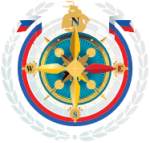Vladimir Putin has instructed the Russian government to develop transport and logistics centers on the border with China and North Korea, according to the Kremlin.
The Kremlin statement says “The Russian government has been instructed to take measures to ensure the development of multimodal transport and logistics centers in the Far Eastern Federal District and to improve the efficiency of their operations, including in the areas of the Nizhneleninskoye-Tongjiang and Blagoveshchensk-Heihe railway bridge crossings, as well as the bridge crossing under construction across the Tumannaya River (in the direction of North Korea), ensuring its commencement of operation in 2026 and bringing access roads to the said crossings up to standard.”
These indicates the development of services industries around these existing projects so that when they are completed, logistics, warehousing, customs and other transport and freight services will also be ready as these routes open up.

The bridge at the Nizhneleninskoye-Tongjiang border crossing has a total throughput capacity of 20 million tonnes of cargo per year, while cross-border trade at Heihe has also been booming. With Chinese and Russian nationals able to cross the border visa-free, small industries have been flourishing, including in agriculture (berries and honey) to the medical services tourism sector. The Tumannaya River bridge, servicing North Korea, will be capable of significant upgrades in the volumes of Russia-North Korea trade.
This October 14 satellite image shows continued high levels of rail activity between the two nations, with a freight train traveling from Khasan to Tumangang. The train consists of two locomotives, eight freight cars, one gondola, and three tank cars. Within the south classification yard at the Tumangang rail facility, there are nine locomotives, eleven ore cars, sixty-five tank cars, and three maintenance-of-way cars present.

Accurate Russia-North Korea bilateral trade data is difficult to obtain due to its sensitive nature, however is now likely to have surpassed Russia-South Korea trade volumes and be running into the tens of billions of dollars per annum. Interestingly, recent studies suggest that North Korea could have the world’s largest rare earth reserves. These deposits cannot at present be exploited due to a lack of significant demand and crippling sanctions—the country being cut off from external markets and having not yet developed a society based on mass consumption.
The Jongju site, in North Korea, is home to nearly 216.2 million tons of rare earth oxides, double the known world reserves. In terms of monetary value, if these figures are accurate, South Korea estimates the value of the mineral resources of its North Korean neighbour at US$2,800 billion.
Further Reading
Russia, Central & Northeast Asia’s New Supply Chain Routes: Updates





